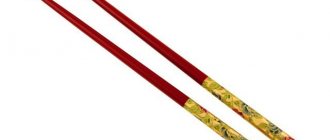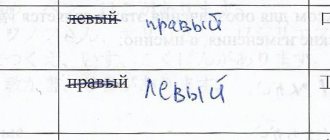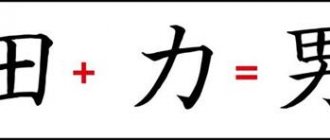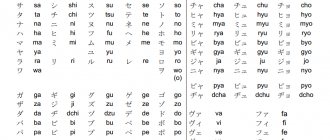Not to be confused with Signed Japanese.
| Japanese Sign Language | |
| 日本手話Nihon Shuwa | |
| Native to | Japan |
| Native speaker | 320 000 (1986) [1] |
| Language family | Japanese Gesture Family
|
| Official status | |
| Adjustable | Japan Federation of the Deaf |
| Language codes | |
| ISO 639-3 | jsl |
| Glottolog | japa1238 |
Japanese Sign Language
(日本手話, Nihon Shuwa), also known by the acronym
JSL
, is the dominant sign language in Japan and is a natural language like spoken Japanese.
History[edit]
Little is known about sign language and the deaf community before the Edo period. In 1862, the Tokugawa shogunate sent envoys to various European schools for the deaf, but the first school for the deaf was not opened until 1878 in Kyoto.
Before 1948, deaf children were not required to attend school or receive formal education. [3]
The second half of the 20th century saw subtle cultural changes in views of deaf people in Japan. The long-standing concept that "deaf" meant only "people who cannot hear" emphasized physical impairment as part of the biomedical disease model; however, it was gradually replaced by a slightly different paradigm. “Deaf people” were more often referred to as “people who use Japanese Sign Language.” In other words, the biomedical disability model began to be gradually replaced by the sociocultural or JSL paradigm. [4]
The Japan Federation of the Deaf has worked with slow success in efforts to expand communication capabilities for Japanese, the primary language of JSL. [5]
Changing the status of JSL and the deaf in Japan is a slow process; but there are highlights. For example, JSL has a protector in the imperial family. Kiko, Princess Akishino has studied JSL and is a qualified sign language interpreter. [6] She participates in the High School Sign Language Competition held every August and the Mothers of Hearing-Impaired Children's Appreciation Competition every December. In October 2008, she participated in the 38th National Conference of Deaf Women. [7] She also signs at informal meetings of the deaf. [8]
The deaf community has supported the passage of the proposed Sign Language Act. [9] The Basic Law on Persons with Disabilities was adopted in 2011. This law recognized sign language as a language. [10]
Translators [edit]
The slow integration of JSL into the context of Japanese culture has been accompanied by an increase in the number of sign language interpreters:
- 1991: Japan Association of Sign Language Interpreters (JASLI) established [11]
- 1997: Code of Ethics for Sign Language Interpreters adopted by JASLI [11]
- 2002: The Japan Federation of the Deaf and the National Sign Language Interpretation Research Association established the National Sign Language Training Institute [11]
In 2006, the Japanese government amended the Act to Promote the Independence of Persons with Disabilities. New language in the law encourages local governments to increase the number and use of JSL translators. [12]
Japanese gestures. Part 1
◆:*:◇:*:◆:*:◇:*:◆
The Japanese regularly use about 100 different gestures in everyday communication with friends, work colleagues and, in general, with the people around them.
In Western cultures, signed communication is often seen as simply an addition to conversation, but the Japanese rely heavily on gestures, from the simplest addresses to expressing emotions and preferences.
◆:*:◇:*:◆:*:◇:*:◆
So, let's begin)
:one: Calling a person to you
Seeing this gesture for the first time, you might think that you are being chased away or thus asked to leave. But in fact, the Japanese invite people to come to them.
What it looks like:
The person's palm will be facing down, fingers pointed forward. The Japanese will bend their fingers towards the palm and then straighten them again.
───── ◉ ─────
───── ◉ ─────
:two: Counting in Japanese
This set of gestures is often misunderstood.
Because when, for example, we count the amount of something on our fingers, then it is the number of straight fingers that shows the required number. But in Japan it’s the other way around - the amount of something is shown with bent fingers, although we also often use this method.
What it looks like:
───── ◉ ─────
───── ◉ ─────
:three: Evasive answer “no”
The Japanese often never refuse directly. In most cases, such a response is considered too harsh, as they say, “to the forehead.” That's why the Japanese use body language instead of words.
For example, if a Japanese man cannot grant your request, to express his regret, he will most likely put his hand on the back of his head and forcefully exhale through clenched teeth. This whole “perception” replaces the word “no”, requiring you to simply understand this silent message and forgive the person for his refusal.
What it looks like:
───── ◉ ─────
───── ◉ ─────
:four: Direction indication
In Japan, instead of pointing in the direction with a finger, people do so by gracefully extending a bent arm in the desired direction, while keeping the palm open and facing upward. From the outside it looks like the person is a waiter carrying a tray of food.
What it looks like:
───── ◉ ─────
───── ◉ ─────
:five: Talking about ourselves
In a conversation, you may see a Japanese person touching the tip of his nose with his index finger. No, they are not trying to make you laugh or tell you that you have a piece of food stuck to your face. This is how “I” tell you.
What it looks like:
───── ◉ ─────
───── ◉ ─────
:six: Greetings and farewells
It is not common for the Japanese to shake hands or kiss each other on the cheek when meeting. Most often they can be seen bowing and holding out their business card with both hands.
Young people and friends often wave their hands sharply from side to side when greeting and saying goodbye.
What it looks like:
───── ◉ ─────
───── ◉ ─────
I hope you found it interesting.
Continued ^ ^
Other conditions for signing in Japan[edit]
Japanese Sign Language is often confused with other hand-coded communication languages used in Japan. Japanese Sign Language is a natural language that, like any other language, has its own linguistic structures. Manual systems for expressing spoken language often result in unconventional structures and incomplete sentences in both spoken and signed languages. In Japan there are three types of sign terms [13] [1]:
- Nihon Shuwa (JSL: Japanese Sign Language) Nihon Shuwa (JSL) is a natural language created from unique phonology, morphology, syntax and semantics, like all languages.
- Taiou Shuwa (Japanese manual coding or simultaneous communication) Taiou Shuwa uses the word order (grammar) of Japanese and supplements sign words with Japanese. In other words, Taiou Shuwa is not a sign language, but a Japanese language.
- Chuukan Shuwa (Contact Mark) Chuukan Shuwa combines JSL with Japanese grammar. In the US this is called a contact sign.
Among the sign terms, only JSL is a sign language. However, these three types of markings are commonly referred to as "shuwa (sign)" in Japan.
The sign languages of Korea and Taiwan share some signs with JSL, possibly due to cultural transfer during the Japanese occupation. JSL has approximately 60% lexical similarity to Taiwanese Sign Language. [14]
Left hand gesture
© DAPA Images
In many countries, people do not pay attention to which hand they use to offer something to other people. However, in India, Sri Lanka, Africa and the Middle East, the left hand is considered "dirty"
, intended for wiping in the toilet. Even a left-handed person should eat with his right hand, since only it is considered suitable for eating. The same applies to shaking hands and passing objects.
In Japan, giving with both hands is considered polite, while a one-handed gesture can imply disdain.
Education of the deaf[edit]
The conflict over the definition of JSL and Taiou Shuwa continues and it has implications for deaf education [15] [2] . In the 1990s, long-term oral training was transformed into a total communication method. Previously, deaf children were forced to speak and banned from using sign language in all deaf schools. Using the total communication method, teachers use all means of communication, including spoken, written, and simultaneous communication, to suit each deaf child. Also, a sign was spreading in Japan at that time, but this sign was used in conjunction with speech, called Taiou Shuwa. In 2003, the Japan Association of Deaf Children and Parents issued a civil rights statement entitled “The Rights of Deaf Children to Equality in Education Have Been Violated.” They asked for teachers who can teach JSL in all schools and demanded that JSL cambeism classes for all universities be given a license for teachers of the deaf. However, the Japan Federation of the Deaf stated that "human rights may be violated by distinguishing between the two communication methods for JSL and Taiou Shuwa users," with some agreement with the Japan Deaf Children and Parents Association. Finally, the Japan Federation of Bar Associations prepared an "Opinion on the Need for Extended Sign Training" and they used the word "sign" instead of JSL. There was no mention in the statement that teachers could teach in JSL in all schools for the deaf. Currently, JSL is used by only one private school in Tokyo, Meisei Gakuen, and other schools for the deaf use other methods of communication.
Germany
The Germans, like the British, do not particularly like tactile contact, so they try to keep their distance from the interlocutor. In general, in Germany you can simply behave with restraint, without being distracted by facial expressions and gestures. For residents of this country, such behavior is absolutely normal. It is interesting that as a sign of gratitude, the Germans do not applaud, but knock on some surface with their clenched fist.
Bilingual education for the deaf in Japan[edit]
Bilingual education for the deaf focuses on the acquisition of JSL and written language. Some parents choose another language to communicate with their children, as well as sign language, such as spoken language. Some parents also choose to use other tools, cochlear implants and hearing aids, for their deaf children with sign language. Regarding the education of the deaf, the use of signing has been cited in studies as it hinders the acquisition of written language over a long period of time. However, recent articles [16] report that children who are fluent in a first language have the same opportunity to learn a second language as other foreign language learners, although the conditions are different. Therefore, the most important thing is to learn to speak your native language fluently. The challenge for the future is to think about how to build a bridge between Japanese sign language and written language in bilingual education. In Japan, bilingual education has been provided in a free school (Tatsunoko Gakuen) since 1999 and in a school (Meisei Gakuen) since 2009.
Greece
This state, like Italy, loves active waving of its arms. Greeks are an emotional people, so their conversation from the outside may seem like the beginning of a fight. But no, it’s the people of Greece who express their emotions this way. However, before the trip, it is worth remembering that gestures here have their own meanings. For example, the same OK sign made from the index finger and thumb in Greece is considered offensive and hints at a man’s gay orientation.
Law[edit]
In 2011, the first sign "language" law for persons with disabilities was passed on July 29 and announced on August 5 [3]. After this, the sign was adopted and it was recognized as a form of language in Japan. In 2013, the first sign language law was passed in Tottori Prefecture [4]. “A sign is a language,” that’s how the law was written. Since then, the sign law has spread throughout Japan on a prefectural scale. There is currently a goal to pass a sign language law at the national level. However, there are two conflicting positions [17] [5] about the sign law. These sign laws were not written as JSL. One position argued that it was dangerous to mislead that sign language included not only JSL, but also Taiou Shuwa (hand-coded Japanese or simultaneous communication), Chuukan Shuwa (contact sign). Another argued that establishing JSL as a law makes it easy to differentiate between users of different gestures.
Italy
In this country, they have long wanted to make sign language the state language. Italians love to gesture; there are about 250 different movements in their everyday life. In addition, Italians often reduce the distance between interlocutors and love tactile contact. There are even two groups of gestures - one can mean entire words and expressions, and the second - the emotional state of a person.
Distribution among listeners[edit]
Interest in sign language among Japan's hearing population is growing, with numerous books now published targeting the hearing population, a weekly television program teaching JSL, and the increasing availability of evening school classes for listeners to learn JSL. Several television series have been produced, including Hoshi no Kinka
(1995), in which gestures were an important part of the plot, and sign language dramas are now a minor genre on Japanese television.
In the 2006 hit film Babylon
, directed by Alejandro González Iñárritu and nominated for several Academy Awards, JSL is also an important plot element. Listening actress Rinko Kikuchi received a nomination for Best Supporting Actress for her lead role in this film.
Around 40,000 signatures were collected in Japan, including both hearing and deaf people, to headline a scene in Babylon speaking Japanese for a deaf audience. [18]
School anime drama film "Silent Voice" (Japanese: 聲の形 Hepburn: Koe no Katachi, lit. "Shape of Voice"
), released in 2021, features famous deaf JSL-speaking character Shoko Nishimiya. It was produced by Kyoto Animation, directed by Naoko Yamada, written by Reiko Yoshida, and featured character designs by Futoshi Nishiya. It is based on the manga of the same name written and illustrated by Yoshitoki Chima. The film premiered on September 17, 2021 in Japan.
China
The Chinese are stingy with gestures compared to Italians or Greeks, especially in business communication. They respect maintaining distance and do not violate personal boundaries. Nevertheless, they are happy to shake hands with foreign guests, thereby showing respect for them. In return, you can greet the Chinese with their traditional gestures, such as shaking hands with yourself.
Elements [edit]
Like other sign languages, JSL (commonly called simply 手話shuwa
"manual speech") consists of words or signs and the grammar with which they are associated.
JSL characters can be nouns, verbs, adjectives, or any other part of a sentence, including suffixes that indicate tense, negation, and grammatical particles. The signs consist not only of a hand gesture, but also of mouth
(口話, kōwa, "oral speech") (pronouncing a standard Japanese word with or without sound).
The same sign can take on one of two different but semantically related meanings, for example in the words "house" and "home", according to his mouth. Another indispensable part of many signs is facial expressions. Yubimoji
"tsu" imitates the katakana form of the characters "tsu" (ツ).
In addition to signs and their grammar, JSL is complemented by yubimoji (指文finger, "finger letters"), a form of fingerprinting that was introduced in the United States in the early twentieth century but is used less frequently than in American Sign Language. Every yubimoji
corresponds to
kana
, as shown in the JSL syllabary. Fingerpelling is used mainly for foreign words, surnames and unusual words. Pantomime (身振り, miburi, "gestures") is used to indicate situations where existing signs are insufficient.
Because JSL is heavily influenced by the complex Japanese writing system, it places special emphasis on the written language and includes elements specifically designed for expressing kanji
in signs.
Either for brevity or for disambiguation, certain characters are associated with certain commonly used kanji
, place names, and sometimes surnames.
Finger writing (空書, kūsho, "air writing") (writing kanji
in the air) is also sometimes used for surnames or place names, as in colloquial Japanese.
Japanese customs, morals and etiquette
(clover translation)
Foreigners in Japan do not always understand the culture of behavior or other customs of the Japanese: where and in what cases it is necessary to take off shoes, what kind of gift should be and for what occasion, what decency exists to be on good terms with neighbors, rituals of behavior with work colleagues, how to behave on trains, etc. and so on.
The Japanese are very meticulous in their rituals of polite behavior and etiquette. For example, among the Japanese it is considered more decent to give an umbrella to an elderly person than a watch or money, or, for example, it is considered indecent to immediately agree to an invitation to attend a wedding, i.e. It's best to wait a couple of days to respond, because if you respond to a wedding invitation right away, the invitees may think that you didn't try very hard to find time in your "busy" business schedule to attend their wedding. . Women cannot wear pearl beads with a double strand around their necks to funerals, because this allegedly can lead to double the misfortune.
Although, you shouldn’t worry too much if you don’t know all the subtleties of Japanese behavior rituals. Naturally, foreigners cannot, and are not required to, know all Japanese customs, so if they make mistakes, the Japanese also treat this with very polite understanding.
What you need to know when visiting Japan
Andrew Bender wrote in the Los Angeles Times: the first thing you encounter when communicating with the Japanese is:
Bows. When I flew to Japan for the first time, I was surprised that before the flight, the entire Japanese crew of the plane came out into the cabin and bowed to the passengers in unison. Then, I saw this collective gesture of welcome and appreciation everywhere at the airport: even from the service staff who meets you at the bus or taxi to take you to your hotel.
Hospitality. It must have been an unwritten law among Ryokan hotel staff to never say no to their guests. When I offered to carry my suitcases to my room myself, since, as it seemed to me, they were larger than the concierge himself, my offer was politely declined. Moreover, when the concierge finally delivered my suitcases to my room, he didn’t even hint at a tip.
The younger generation of Japanese no longer has such refined manners and etiquette as their parents. Although, some universities require their students to adhere to official etiquette, which includes, among other things, prohibitions such as using a mobile phone while riding a bicycle, or eating noodles on the go. At one university in Akita Prefecture, students are prohibited from dyeing their hair or getting piercings. At the same time, universities have special inspectors who ensure that students comply with these rules.
Japanese greeting
The Japanese are traditionally wary of outsiders approaching them. As a rule, they communicate only with people they know, and avoid contact with strangers, because this makes them feel uncomfortable, not knowing how to behave with them when communicating. For this reason, all new acquaintances among the Japanese are usually made with the help of an intermediary, a mutual friend or a third party.
"Aisatsu" is often simply translated as "hello", but in fact, the word has a much broader and more important meaning than its translation suggests. Many books have been written about Aisatsu, describing various aspects of its use. "Aisatsu" refers to greetings, certain rituals of behavior, and various situations, including public speaking and utterances. In order not to find yourself in a stupid situation or seem ill-mannered, you need to know in what cases “Aisatsu” is used. Japanese parents, when raising their children, explain to them from a very early age that knowing the cases and using the "Aisatsu" accordingly is one of the most important things in life.
Addresses to each other
When addressing a person, the Japanese may call his profession or surname with a respectful prefix (usually “san”). Calling someone simply by name is considered unacceptable and rude, but acceptable for close friends. Japanese politeness dates back to the Middle Ages, when society developed rules of etiquette according to social hierarchy. After World War II, as Japanese society became more liberal, politeness rules were used according to the level of familiarity between interlocutors.
Japanese people usually add the polite prefix "san" to their last name. They even use "san" when talking to neighbors or friends they have known for years. However, some "Americanized" young Japanese also use the prefix "san" when referring to names or even nicknames.
Japanese may also refer to a person's profession or occupation, such as sensei (teacher or professor), oishasan (doctor), untenshusan (taxi driver), omawarisan (policeman). At work, the Japanese often address their superiors by job titles, without adding last names, for example, simply - chairman, president, manager, boss, supervisor, etc. That is, for example, the Japanese boss can address the teacher Aya Nakamura as “Nakamura-san”, and the students as “Nakamura-sensei” or simply “sensei”. And some of Nakamura's close friends may address her as Aya-chan. The prefix "chan" is usually used with the names of children, close friends, and sometimes with the names of dogs or other pets.
When addressing strangers, Japanese traditionally must consider age, circumstances, gender, social status and other factors to decide which prefix, as well as polite speech patterns, to use. Nowadays, the Japanese have become less strict with politeness, with the exception of cases of addressing superiors, elderly people, and also in official situations, for which the use of more respectful speech patterns still continues.
Japanese attitude towards appeals
Mistreatment or violation of etiquette by the Japanese can sometimes have serious consequences. In 1975, two Elpida employees, 30-year-old Kunihiro Fukada and 27-year-old Tomohiko Okabe, were hanging out with colleagues in a Tokyo bar. Despite the fact that Okabe was younger than many of those present, he addressed older colleagues in a manner only acceptable when addressing young people, because he believed that his longer tenure in the company than these people, he allows it. He addressed the older Fukada in exactly the same way. Fukada expressed dissatisfaction, and Okabe told him: “What’s wrong with this, I’ve been working in the company longer, and I can address you like that.” Outraged, Fukada grabbed Okabe by the neck, struck him several times in the head, and killed him.
Over time, politeness rituals in Japan have become less strict. For example, some companies even issued special orders for employees, according to which they should address each other not by their job titles, but by their last names with the prefix “san.” Parents and teachers no longer require their children to address their elders with exceptional politeness. However, the older generation of Japanese believes that relaxations in etiquette and politeness rituals lead to coarser speech patterns and a lack of culture in society as a whole.
Japanese bows
The Japanese bow is used for greeting, farewell, expressing respect, humility or apology. The Japanese bow every time they meet, even with the same person whom they meet several times a day. Sometimes they even bow to each other while riding their bikes.
When bowing correctly, your hands should be at the sides of your body. Feet are placed together. A normal bow lasts on average a few seconds, with the exception of longer bows in the temple. There are options when the Japanese bend slightly to the side when bowing so that they do not collide with the bowing person to whom they are bowing.
The depth of the bow is also significant and shows different levels of respect. A slight bow, at an angle of about 20 degrees, is used when meeting unknown people or acquaintances. This bow is done quickly, no longer than a second. Longer and deeper bows are used for mid-level management. The deepest and longest bows are used for the president of the company or members of the board of directors. If a person bows deeper than is required for people of his status, then the other person's return bow should also be mutually a little deeper than he could do according to his status.
Any Japanese television news program usually begins and ends with bows. Special workers at Japanese shops and department stores greet each visitor with a bow at the door. A Tokyo newspaper journalist once calculated that on average a department store door worker bows 665,600 times a year if he works 5 days a week, and 798,720 times if he works 6 days.
To get the hang of bowing, a foreigner, in order to show his politeness to a Japanese, only needs to bow just as deep and long as his opponent. When bowing, you should also politely lower your gaze to the floor rather than look the other person in the eye, and keep your hands at your sides with your palms extended downward, rather than clenched into fists.
Now, when parting, many young modern Japanese say “bye-bye!” instead of bowing. And even some young children try to say goodbye in a new way, saying "bye-bye", repeating these words repeatedly as they say goodbye to their friends. They like to say goodbye using words that can more emotionally express how much they love their friends and how sad they are to say goodbye to them.
Special shout out to Dogeza
"Dogeza" is a bow of respect for a person of extremely high status, or for apology, it is the deepest of all types of bows, even going as far as kneeling and touching the forehead to the floor. "Dogeza" is only used in special cases, i.e. it does not apply to ordinary daily bows. Kanta Ishida wrote in the Daily Yomiuri: “Bowing “dogeza” is a rule of decorum that is unique to Japan, the ancient meaning of which can be expressed by the example of such complex concepts as “losses are more important than gains”, “you will gain if you say “I’m sorry” "", "you will win if you get rid of pride." But nowadays, the meaning of "dogeza" is no longer associated with such high moral principles. “Dogeza” has now become more often used not in the sense of expressing a state of mind, but figuratively, as one of the terms in Japanese literature, the meaning of which roughly corresponds to “bow to diplomacy” or “to bow,” i.e. has become a kind of element of foreign diplomacy.” [Source: Kanta Ishida, Daily Yomiuri, April 1, 2011].
Apology phrases
It is useful for tourists in Japan to know the two most common forms of polite apologies: "gomen nasai" (I'm sorry) and "sumimasen" (I'm sorry), which can be used in almost any situation.
Politeness on various occasions
In cases of politely handing over an object, or giving a gift to a Japanese person who is older than you, you need to show all your respect by taking it with both hands at the same time.
On public transport, you should immediately give up your seat to older people, pregnant women and women with small children.
Objects dropped by someone, for example, keys, in a park or on the road, must be picked up from the ground and hung either on a branch or placed in some other conspicuous place. Lost documents, notebooks, bags, clothes or other property must be picked up, handed over to the lost and found, or the person who found them tries to find the owner of these things. Walking past items dropped by someone is considered gross bad manners.
Bad manners in Japanese
The Japanese consider it a sign of bad manners to stare at people, stare into the eyes of your interlocutor, cross your arms over your chest when talking, cross your legs, or keep your hands in your pocket. According to custom, the Japanese focus their gaze on the lower part of the neck when talking and try to avoid crossing their gaze with the interlocutor.
Blowing your nose in public is considered the height of indecency. If you have a runny or stuffy nose, then you need to excuse yourself and go blow your nose somewhere where there are no people and you won’t be heard, or to the toilet. It is also considered the height of indecency to yawn full-mouthed in public or chew chewing gum.
In an airplane cabin, or indeed anywhere else in a cafe or bar in Japan, simply throwing a crumpled paper napkin on the table or leaving an unfolded blanket behind is considered bad manners. The Japanese always carefully put away everything after themselves: napkins, blankets and even various wrappers or packaging before throwing them away. The Japanese are generally trained to fold and arrange things neatly. Even small children carefully fold and put away their things. However, some young “ordinary” Japanese sometimes “in a modern way”, without thinking, simply throw wrappers and plastic bags on the ground.
Many Japanese prefer to wait for another subway if the cars are crowded, they prefer a more comfortable and relaxing ride, taking a soft seat to relax and take a nap. The Japanese do not like people who talk on mobile phones or talk loudly on public transport. Also on public transport, they do not like women who smell strongly of perfume, young people who eat or drink, men who read porn magazines in public.
Eating on the go, for example while walking the streets, is treated with great disdain by older Japanese people. Brushing your teeth with toothpicks after eating in any public place, incl. at the table is considered disgusting.
Not all Japanese treat lack of manners with due tolerance. One day, a man, a school teacher, was arrested for hitting a woman who sat cross-legged in a train carriage and swung her toe against the man’s clothes, and did not even apologize. Or, the police fined a man who dragged a young woman who was chatting on her cell phone out of a carriage by her hair.
Shows of affection
Japanese couples don't usually show their love in public. Public displays of passion between members of the opposite sex, such as kissing, hugging and holding hands, are unthinkable. Even family members cannot hug or otherwise show affection in public places. Most Japanese schoolchildren will say that they have never seen their parents kiss. However, young girls are allowed to walk down the street holding hands, and men are allowed to shake hands when meeting.
Touching the back of a girl's neck is considered a traditional Japanese taboo. Before World War II, kissing scenes were banned in Japanese films. The first kiss in Japanese cinema took place in 1946, and the actors who did it were so concerned that they placed a piece of cloth between their lips during the kiss.
However, modern Japanese youth are increasingly beginning to kiss in public places. Sometimes you can see young people kissing in parks, or wives kissing their husbands as they see them off at train stations. One Japanese baseball team even offered discounted tickets to people who were willing to kiss at the ticket counter.
Japanese gestures
In Japan, gently nodding your head during a conversation means that you are being listened to attentively, rather than agreeing with what is being said. The Japanese express agreement with a quick and sharp nod of the head.
Sometimes Japanese people close their eyes when they listen. This doesn't mean they are dozing. They think. Although, sometimes they pretend to be thinking, but are actually dozing.
Hands folded in front of the chest, as at the beginning of every karate kata, mean “I am truly sorry” to the Japanese. And if in the same position they are raised to eye level, then “very, very sorry.” A raised hand means “stop.”
The Japanese love to make a "V" sign with their fingers when taking pictures. Japanese women have their own gesture - shaking their hands with their fingers spread. The Japanese generally have many abrupt ways of pointing with gestures, which are poorly understood by foreigners.
Some Japanese people raise their hand to face level and swing it from side to side, which means "no." Others touch their nose with their hand, which means “I.” Others give the middle finger, not realizing that it has a vulgar meaning in the West (however, many young Japanese already know what it means). The Western finger gesture "OK" means "money". If someone asks a Japanese man what he is doing tonight and he shows his little finger, it means he is going to spend time with a girl. Japanese women consider this gesture indecent.
The Japanese consider it rude to call someone over by beckoning with your finger. Just like “voting” with your hand when calling someone to you, taxi drivers or waiters, is considered very indecent among older Japanese. The most polite way to get someone's attention is to look in their direction and bow slightly.
Swinging your hand to the side of your face means “gay.” Raised little finger means "women".
Smiles
Many Japanese people show an embarrassed smile when they feel shy, or an apologetic smile if they have made a mistake, asking for an apology for it. The Japanese use a smile to demonstrate their politeness. It is also used as a way to avoid an uncomfortable situation, or as a kind of apology. If you smile back at a Japanese person, it means that you accept his apology. The Japanese also sometimes smile when talking about sad topics because a sad smile expresses personal empathy.
The Japanese always smile deliberately, and not spontaneously, because they are afraid that their laughter may offend the interlocutor, i.e. they don't want to seem rude to anyone. Alphonse Diken, a sociologist at the University of Tokyo, wrote: “Earlier generations of Japanese taught that smiling should be treated with great caution. You cannot laugh too frivolously, because this is tantamount to “losing face.” It was considered impermissible for adults to laugh like children, “losing their face.”
Signs of a noble upbringing
Yumi Miyaki wrote in the Yomiuri Shimbun: "seiza" - sitting on and rising from one's knees in a proper manner immediately indicates the presence or absence of a good upbringing. According to statistics, modern Japanese men are worse at mastering the intricacies of traditional Japanese etiquette than women. Tamami Kondo, master of Japanese etiquette, Fr. [Source: Yumi Miyaki, Yomiuri Shimbun, January 27, 2012]
One of the most important concepts in Japanese etiquette is “me-sen,” or “eye level.” The Japanese constantly monitor their eye level when communicating or greeting. For example, "me-ue" (high eye level) is used by people of higher status, while "me-shita" (low eye level) is used by people of lower status. Master Kondo, who founded the Seishikai Manner Academy in Tokyo in 1977, teaches his students the rule of "me-sen", for example, when entering a room where other people are sitting, when meeting a boss or client, etc. He warns students against opening the door a crack and peering into the room because it is rude and is considered voyeurism.
“At the moment of opening the door, you should look at your hands and smoothly open the door,” explains Master Kondo. This will naturally require lowering your gaze, which will be regarded as politeness. As you walk across the room, lower your eyes slightly toward the floor instead of looking straight ahead. If there are people sitting on the tatami in the room, then to greet them, you should also lower yourself onto the tatami, because when bowing while standing, your eye level will be higher than those sitting. When bowing on the floor, the hands are initially placed on the knees, and then slowly extended forward and placed with the palms on the floor in front of oneself. Next, a bow is made, after which the hands are again placed on the knees. The back, if possible, is kept without slouching at all times, movements are performed slowly and smoothly, i.e. you show your respect for the people whose room you entered.
Master Kondo also talks about the importance of learning to maintain correct posture while sitting, as well as knowing the full polite form of gratitude, such as: “Osewa Ni Natte orimasu” (Thank you). Men in seiza should avoid the common mistake of sitting with their knees wide apart. If you need to go to the restroom or make a cell phone call, Master Kondo says it's important that "you stand up gracefully from a seated position." Many men stand up by first moving their leg bent at the knee far ahead of themselves, or by bending over and placing their hand on the floor in front of them or on the side first - all these options for getting up from seiza are considered a sign of bad upbringing. To properly rise from the seiza position, make sure you maintain an upright body position, then lean on your toes, slide your lead foot forward almost imperceptibly for support, and stand up without losing your upright body position.
Japanese etiquette dates back to the era of the samurai, when strict rules appeared regulating the relationship between superiors and subordinates. The rules of etiquette have been passed down from generation to generation, but now, some modern Japanese believe that they are too complicated. Master Kondo says: “that the main idea of Japanese etiquette is actions by which people can express without words their various feelings towards others. By learning etiquette, you will learn to behave correctly and confidently in any situation, and other people will treat you with respect.”
(JAPANESE CUSTOMS, MANNERS AND ETIQUETTE) see also “These strange Japanese” (Detailed and humorous)
Watch a Kabuki play in Russian
Notes[edit]
- Japanese Sign Language in Ethnologue
(22nd ed., 2019) - Ichida, Y. Japanese Sign Language Association. Estimated number of Japanese Sign Language users. Retrieved June 2001.
- Monaghan, Leila Francis. (2003).The Many Ways of Being Deaf: International Differences in Deaf Communities, p.
211 in Google Books - Nakamura, Karen. (2006). Deaf in Japan: Signing and the Politics of Identity,
page 9 citing Kimura, Harumi and Yasuhiro Ichida.
1995. " Rubunka Sengen
" (Explaining Deaf Culture),
Gendai Shisou
, Vol. 23, no. 3, p. 354–399. - Nakamura, Karen. "Resistance and Co-optation: The Japan Federation of the Deaf and Its Relationship with State Power". Japanese Social Science Journal
(SSJJ) (2002) Vol. 5, no. 1. pp. 17–35. - Valpi, Michael. "The Emperor and the Tennis Pro". Globe and Mail
(Canada). June 27, 2009 - Imperial Household Agency. Their Imperial Highnesses Prince and Princess Akishino
- "Princess Kiko chats with deaf football players in sign language after a movie." Archived July 8, 2011, at the Wayback Machine. Deaf Japan News
. September 7, 2010 - “The Deaf Community Demands Sign Language Law.” Archived July 8, 2011, at the Wayback Machine. Deaf Japan News
. November 15, 2010 - “Sign language is legal!” at jfd.or.jp; excerpt: “Every person with a disability should, where possible, be given the opportunity to choose his or her language (including sign language) and/or other means of communication, and be given increased choice of his or her means of obtaining or using information. will be promoted."
- ^ a b c
Japan Sign Language Interpreters Association, Introduction, Archived November 07, 2010 at the Wayback Machine - Saruhashi, Junko and Yuko Takeshita. "Ten Linguistic Problems in Japan: The Impact of Globalization". Organization for Economic Cooperation and Development
- Jump up
↑ Kimura, H. (2011). 日本手話と日本語対応手話 (手指日本語) - 間にある「深い谷」. - Jump up
↑ Fischer, Susan (2010).
Variation in East Asian Sign Language Structures
. item 501. ISBN. 9781139487399. - Jump up
↑ Kwak, J. (2017). 日本手話とろう教育. Seikatsushoin. - Mayberry, IK (n.d.). The acquisition of a first language after childhood is different from the acquisition of a second language. Journal of Speech and Hearing Research, 36, 1258-1270. Retrieved December 1993.
- Jump up
↑ Mori, S., & Sasaki, N. (2016). 手話を言語と言うのなら. Hitsuji-sobou. - Yonmannin shomei haikyuu ugokasu
.
Asahi
(in Japanese). asahi. Retrieved February 13 +2017.
Links[edit]
- Chokaku Shogaisha Rikai no Tame, Kanagawa Prefecture website, accessed August 27, 2009 (in Japanese)
- Nyumon - Shin Shuwa Kyoshitsu - Kusei Rodosho Hoshiin Yosei Koza - Nyumon Katei Taiyo
(in Japanese). Zenkoku Shuwa Kenshū Senta-. 2004. ISBN. 978-4-902158-11-3. - Monaghan, Leila Francis. (2003). The Many Ways of Being Deaf: International Differences in Deaf Communities
. Washington, DC: Gallaudet University Press. ISBN 9781563681356; OCLC 248814292 - Nakamura, Karen. (2006). Deaf in Japan: Signatures and the Politics of Identity
. Ithaca: Cornell University Press. ISBN 9780801443503; ISBN 9780801473562; OCLC 238810838
Türkiye
In Turkey, facial expressions are actively used for communication. However, it is better for a tourist to first find out which body movement means what. The Turks have adopted their own system, which, if not known, can put a foreigner in an awkward position. For example, a thumbs up, which is usually used to catch a car in Europe, in Turkey means a hint of intimate relationships. And if you clench your fist and extend your little finger with your palm down, the interlocutor will understand that you are offended by him and do not want to communicate.









